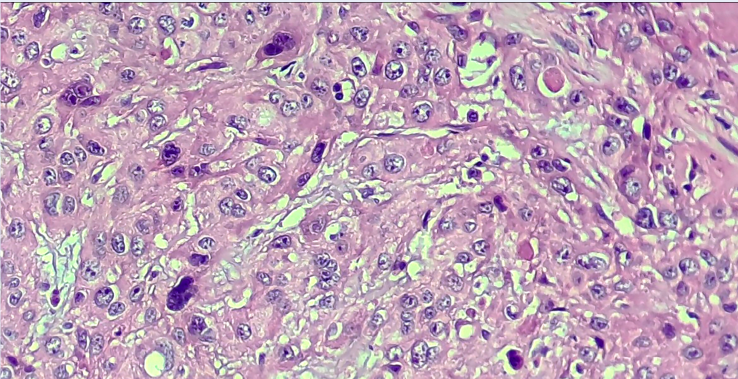Epstein–Barr virus-encoded RNA expression and its relationship with the clinicopathological parameters of Vietnamese patients with nasopharyngeal carcinoma
DOI:
https://doi.org/10.15419/bmrat.v10i9.830Keywords:
Nasopharyngeal carcinoma, clinicopathological parameters, Epstein-Barr virus, chromosomal in situ hybridization, EBERAbstract
Introduction: Nasopharyngeal carcinoma (NPC) is a common malignancy in Viet Nam, and its pathogenesis is closely associated with Epstein?Barr virus (EBV) infection. However, the relationship between EBV infection and clinicopathological characteristics related to NPC prognosis in Vietnamese patients remains poorly understood. This study aimed to investigate the association between EBV infection and various clinical parameters in Vietnamese patients with NPC.
Methods: We collected clinical data from 31 patients with histologically confirmed NPC and evaluated their samples for EBV-encoded RNA (EBER) expression using the chromosomal in situ hybridization (CISH) technique. We examined the relationship between EBER expression and several clinical parameters, including age, sex, lymph node metastasis, tissue invasion and metastasis, clinical stage, and histological NPC type.
Results: The patients' ages ranged from 19 to 74 years, with 80.64% aged >40 years and 87.1% male. In addition, 80.65% had lymph node metastasis, and 38.71% had tissue invasion and distant metastasis. Most patients (67.74%) were diagnosed at a late stage (III or IV), with the most common histological type being type III (48.39%), followed by type I (29.03%) and II (22.58%). EBER expression was observed in 48.39% of the patients and was significantly associated with younger age (<40, p = 0.0362) and undifferentiated carcinoma (type III, p = 0.0007). However, EBER expression was not significantly associated with sex, lymph node metastasis, tissue invasion and metastasis, or clinical stage.
Conclusions: Our study suggests that EBV infection may contribute to NPC pathogenesis. It also shows significant associations between EBV infection and younger age and undifferentiated carcinoma type. The CISH technique could help screen asymptomatic high-risk individuals, managing and predicting the NPC prognosis. The small sample size and single-center design limit the generalizability of our findings.

Published
Issue
Section
License
Copyright The Author(s) 2017. This article is published with open access by BioMedPress. This article is distributed under the terms of the Creative Commons Attribution License (CC-BY 4.0) which permits any use, distribution, and reproduction in any medium, provided the original author(s) and the source are credited.
